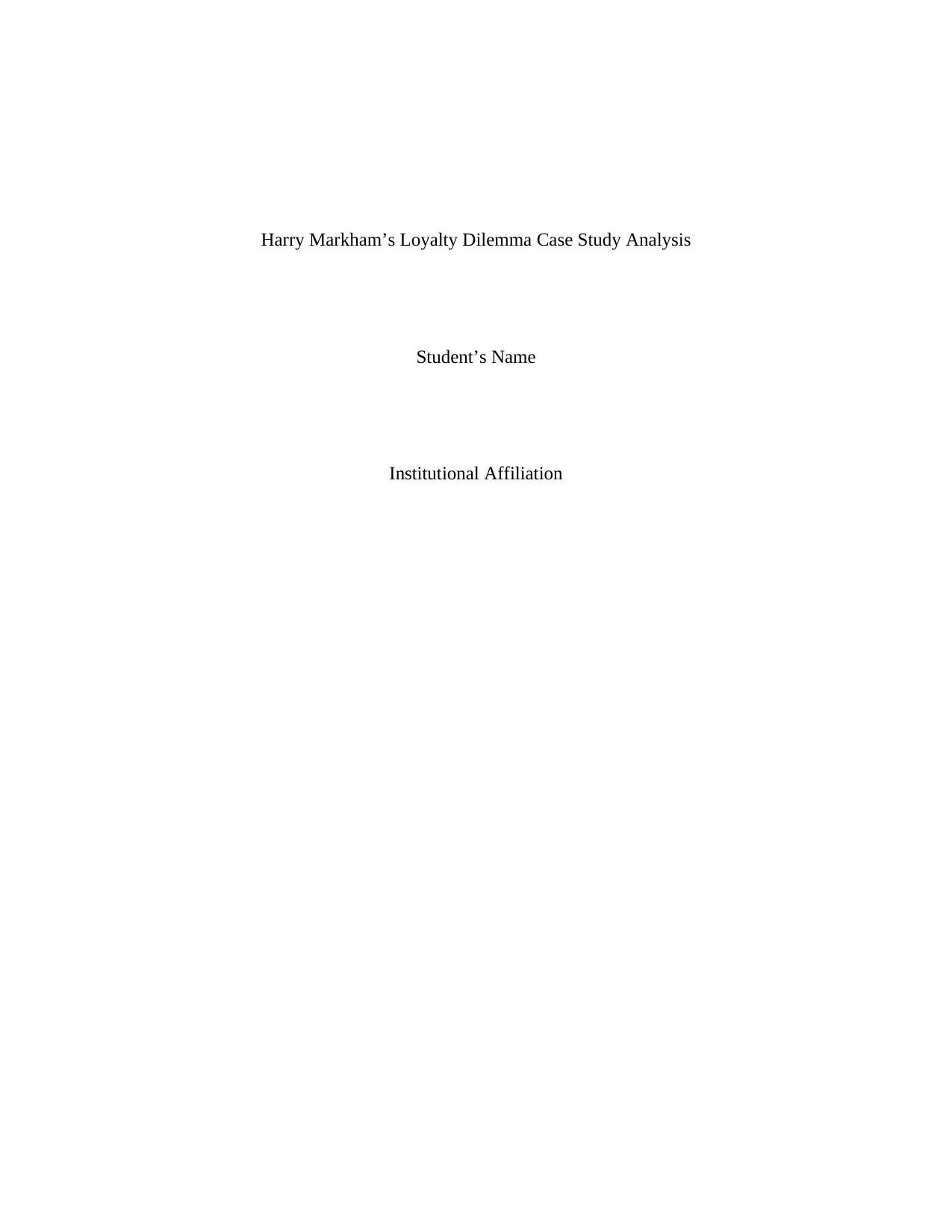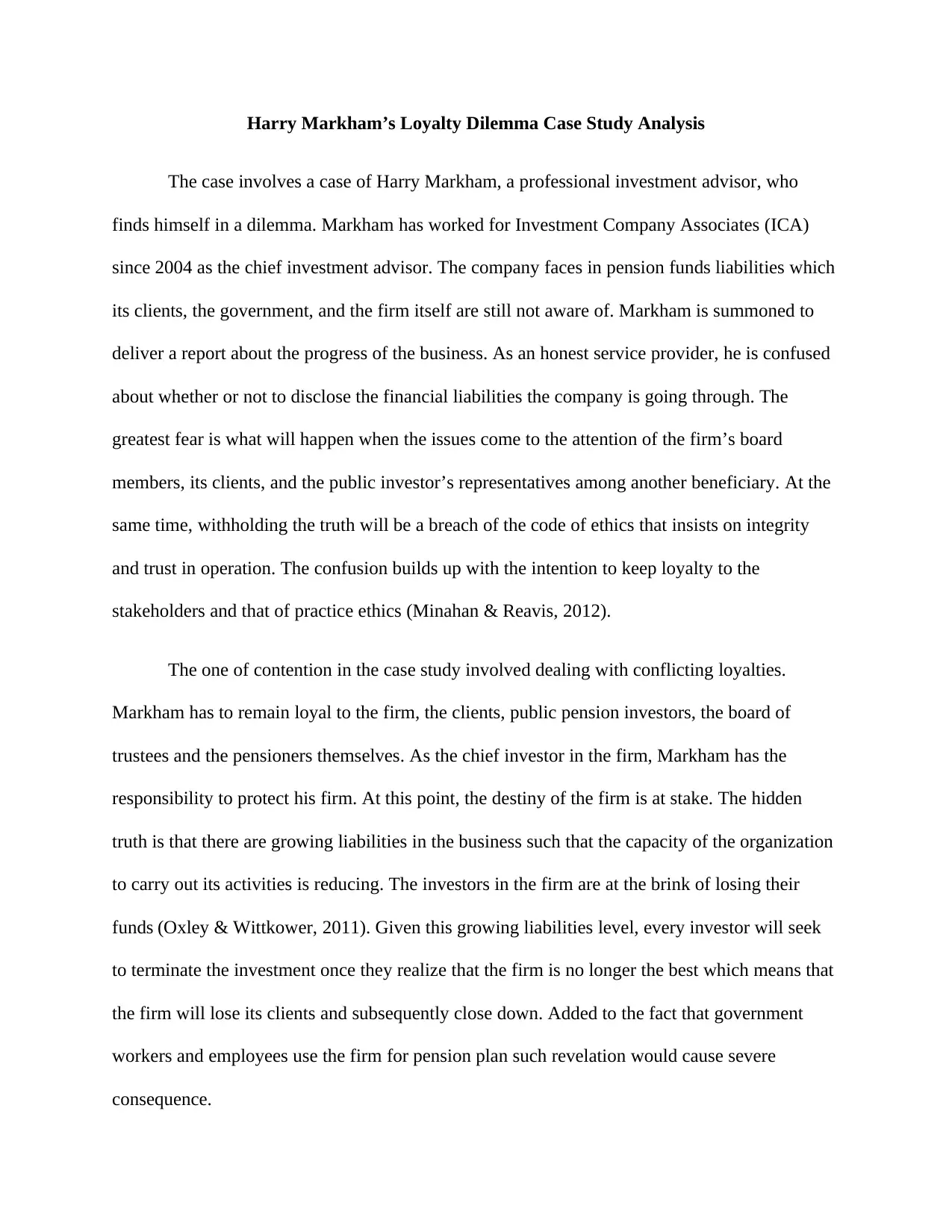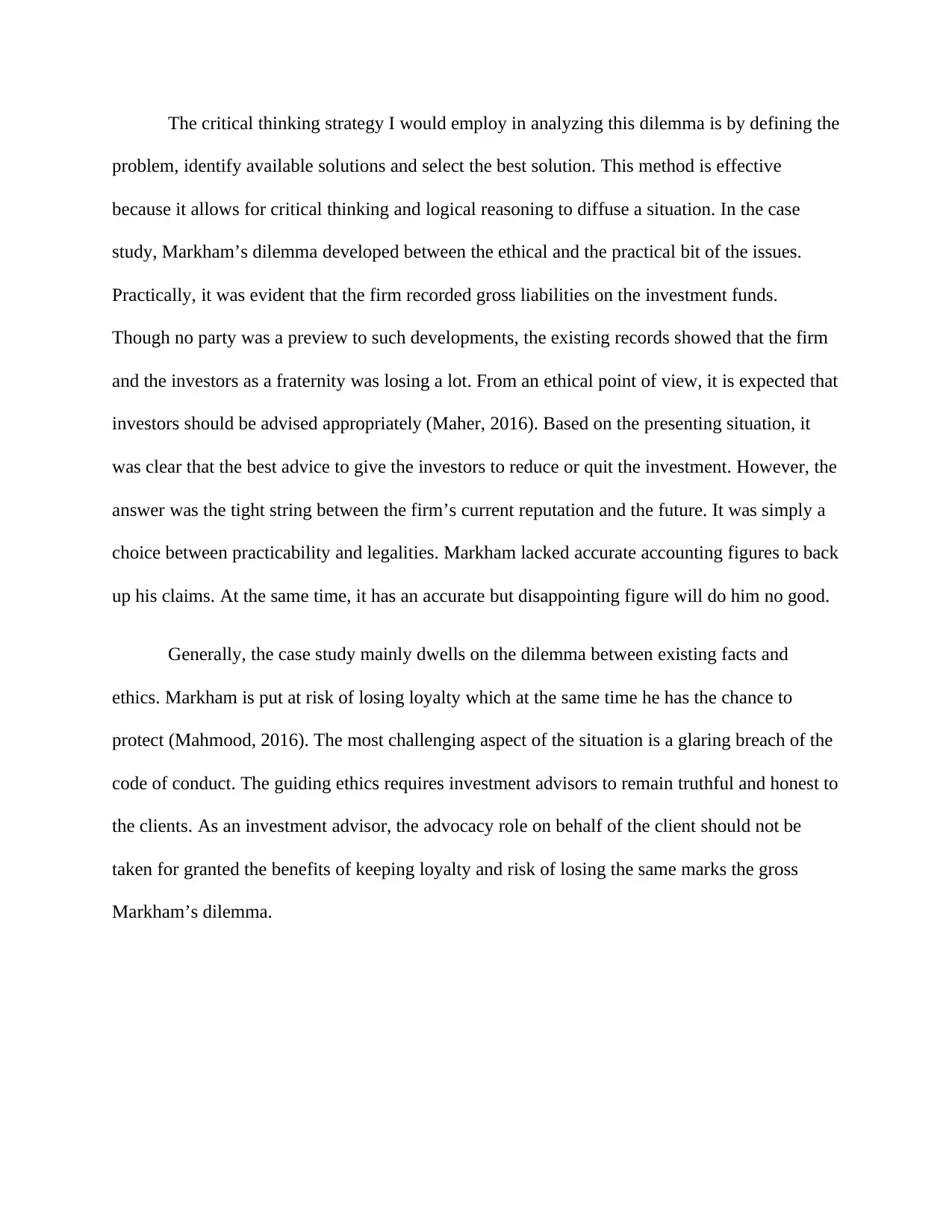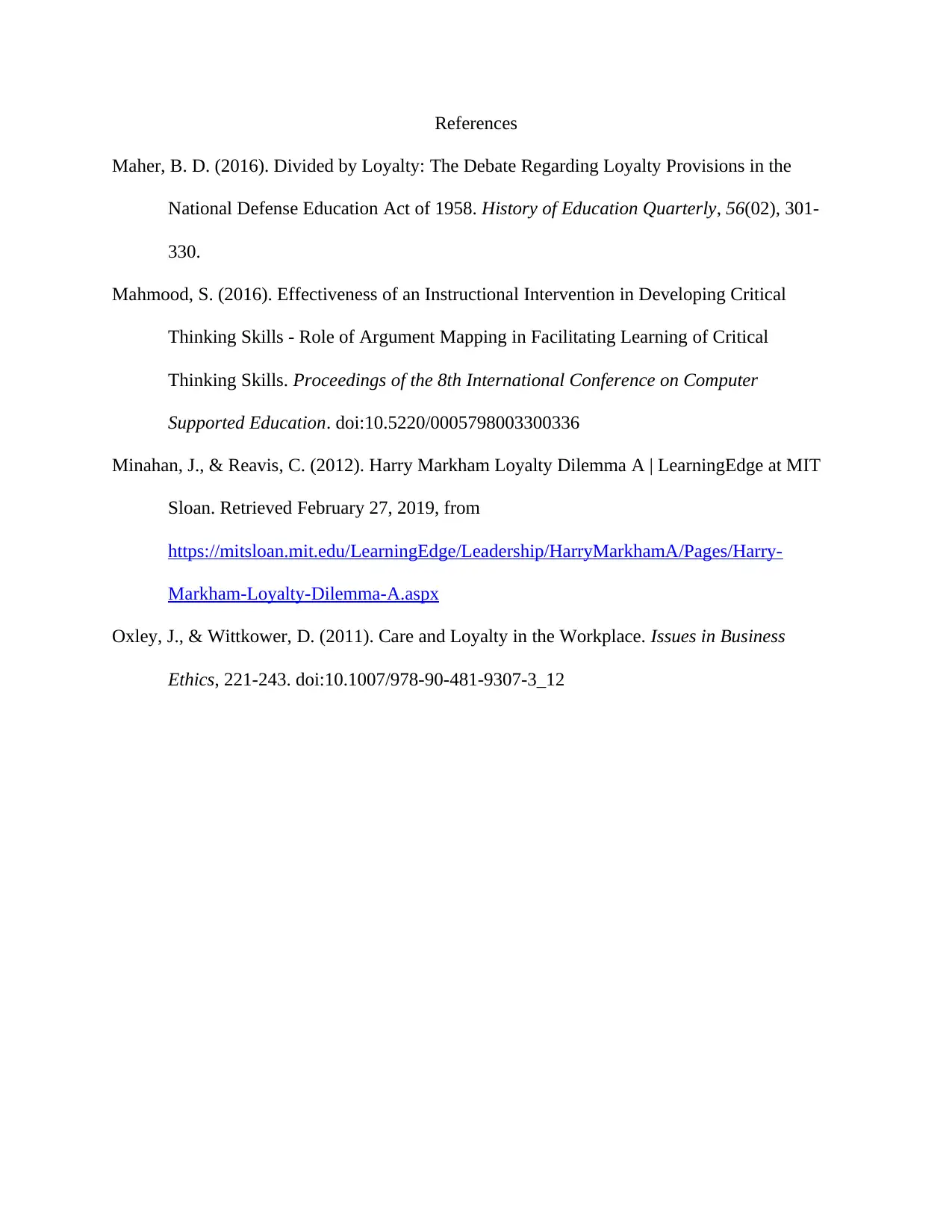Ethical Dilemma: A Case Study of Harry Markham's Loyalty Conflict
VerifiedAdded on 2023/04/23
|4
|855
|315
Case Study
AI Summary
This case study delves into the ethical dilemma faced by Harry Markham, the chief investment advisor at Investment Company Associates (ICA), who discovers significant undisclosed pension fund liabilities within the firm. Torn between his loyalty to the company, its clients, and his ethical obligations, Markham grapples with whether to reveal the truth about the firm's financial instability, which could lead to its collapse, or to remain silent and potentially breach his professional code of conduct. The analysis employs a critical thinking strategy to define the problem, identify potential solutions, and select the optimal course of action, highlighting the conflict between practical considerations and ethical responsibilities. The case underscores the challenges of balancing conflicting loyalties and upholding ethical standards in the face of organizational pressures.
1 out of 4









![[object Object]](/_next/static/media/star-bottom.7253800d.svg)